“Austie” Excerpts from “The Kingdom of the Kid: Growing Up in the Long-Lost Hamptons”
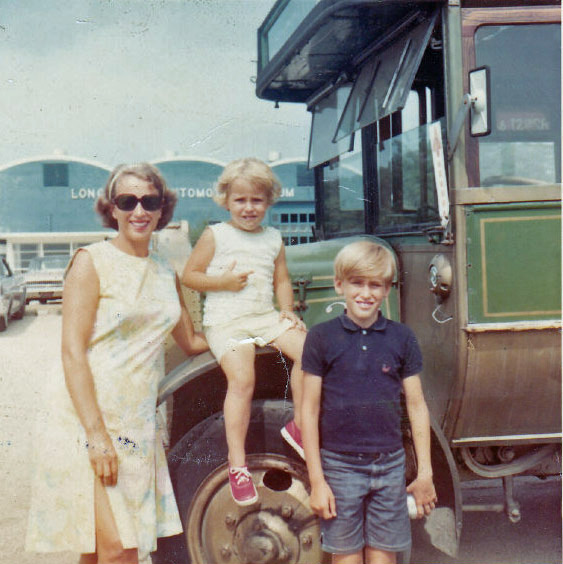
In his recent memoir "The Kingdom of the Kid" about growing up of the East End from 1967-1972, author Geoff Gehman has a chapter on Henry Austin Clark, Jr. In a VanderbiltCupRaces.com exclusive, Geoff has granted permission to reprint excerpts from the chapter combined with some of my favorite Henry Austin Clark, Jr. photos (primarily from the collection of Walter McCarthy.)
“The Kingdom of the Kid: Growing Up in the Long-Lost Hamptons" was published in July 2013 by SUNY Press.Geoff is a former resident of Wainscott, Long Island, and a former arts writer for The Morning Call in Allentown, Pa., and lives in Bethlehem, Pa. He would love to hear any comments and can be reached at [email protected]. His book is available at the Book Revue in Huntington, BookHampton in East Hampton and on amazon.com and barnesandnoble.com .
Enjoy,
Howard Kroplick
AUSTIE
From “The Kingdom of the Kid: Growing Up in the Long-Lost Hamptons” by Geoff Gehman
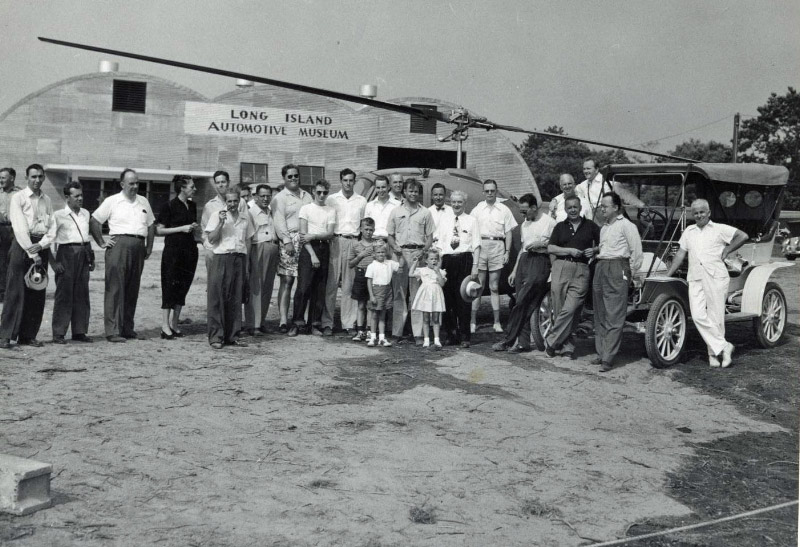
One of the landmarks on the Montauk Highway in Southampton was a big blue building that imitated an airplane hangar with three humps. Behind that bulky steel façade was every conceivable classic car: primitive, elegant, sporty, crazy, exotic, erotic, extinct. Inside that cavernous garage my heart burned rubber and my imagination popped a wheelie.
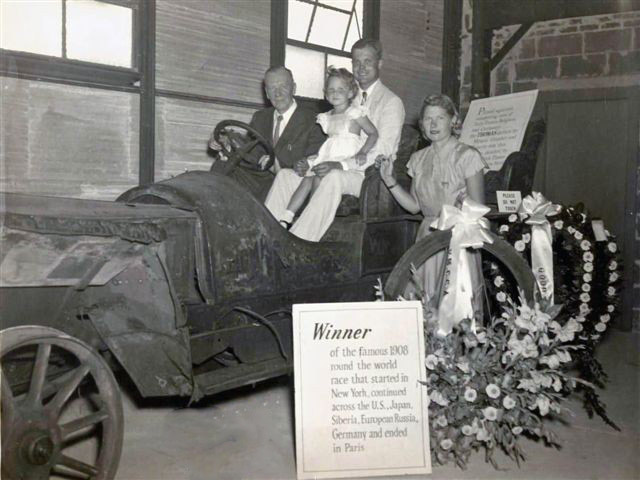
One of my favorite vintage vehicles was the 1907 Thomas Flyer that won a 1908 around-the-world race from Times Square to Paris. I couldn’t believe that such a basic automobile—basically, an open-air wagon with a steering wheel and a motor--traveled nearly 22,000 miles over 169 days. Another top choice was a Pierce Silver Arrow made for the 1933-1934 Century of Progress International Exposition in Chicago. I was less impressed by the pedigree than the sleek, smart body. The recessed door handles, the tapered back, the front fenders that stored spare wheels—here was my first piece of moving sculpture.
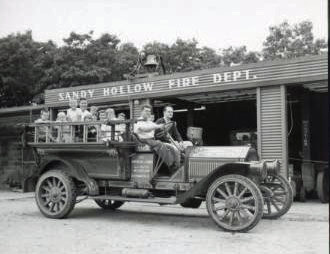
The adventure continued around the grounds. For no trip to the Long Island Automotive Museum was complete without cruising a backyard dirt road in an antique hook-and-ladder fire engine that spewed smoke and lurched like a cranky freight train. Cranking the ear-slapping, window-rattling siren made me feel like the captain of the resident Sandy Hollow Fire Company.
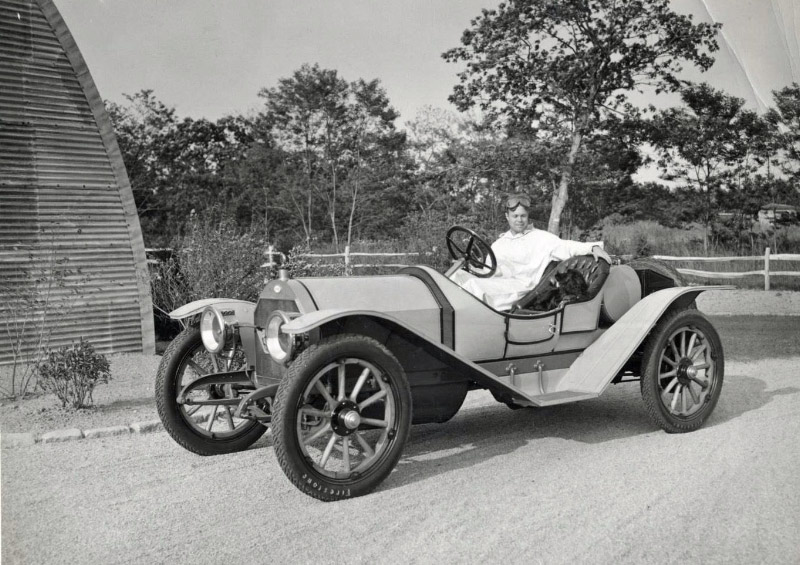
The museum was, in short, a candy store. Somehow it makes sense it was owned and operated by an heir to the Jack Frost sugar empire, a man with a sweet tooth for classic cars. Raised in Flushing, Queens, Henry Austin “Austie” Clark Jr. was a Harvard freshman when he acquired his first early auto, a Ford Model T made in 1915, two years before he was born. After leaving the Navy, where he served as a radar technician in World War II, he began collecting vintage vehicles in earnest. By 1948 he owned 35, some of which he exhibited in his new Southampton museum in a three-bay Quonset hut.
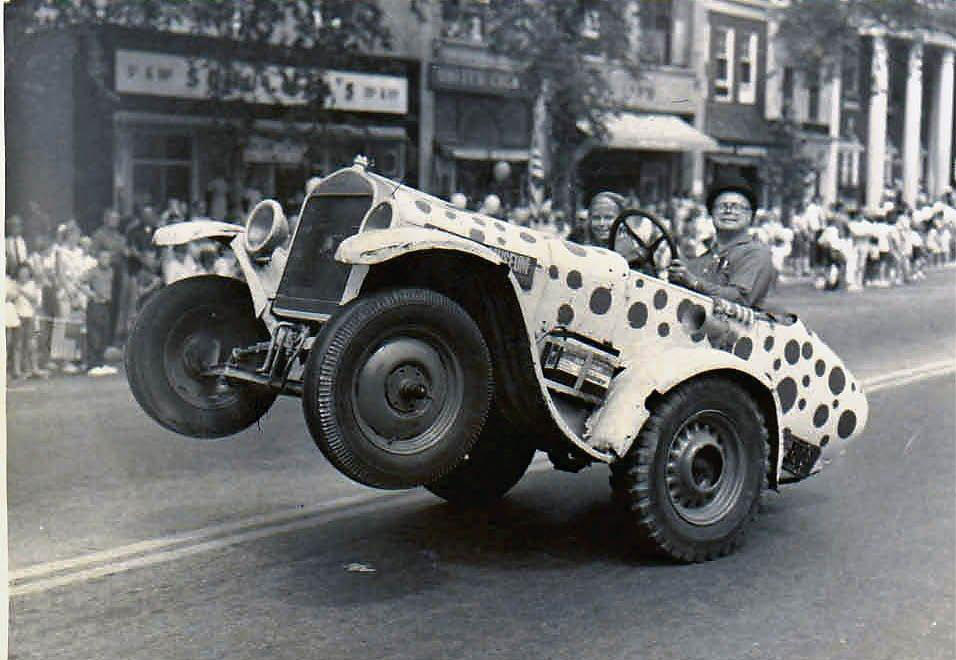
Clark was a detective with flair. He found that 1933 Pierce Silver Arrow, for example, in a junkyard in Cicero, Ill. He bought it because it was stylish, because it was one of only six made that year, and because he could easily polish its provenance. The holes in the trunk, he loved to say, were made by bullets fired by gangsters employed by Al Capone, the car’s original owner and Public Enemy No. 1. Clark doubled as a canny archaeologist and an uncanny psychologist. “My father amassed his collection in large part because widows wanted these hulks hauled out of their garages,” says his son, Henry Austin “Hal” Clark III. “He had all sorts of stuff, from the ridiculous to the sublime. He had 17 cars that no one knew existed.”
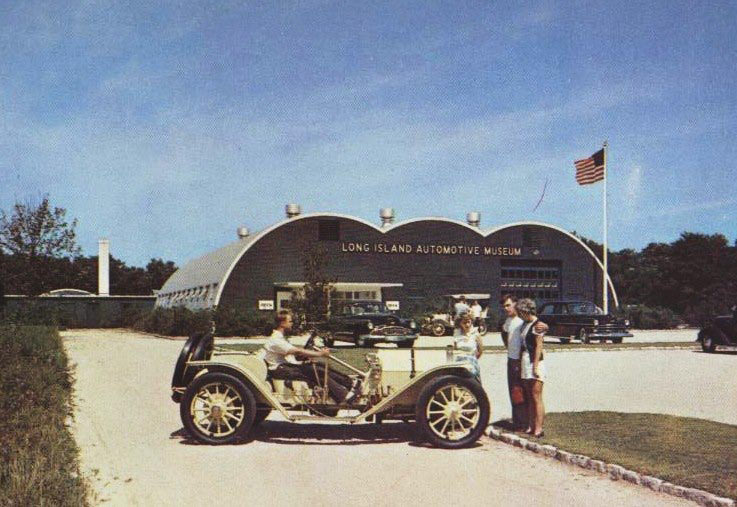
In his heyday Clark owned some 250 autos and countless other motorized devices (i.e., a gas-powered pogo stick). What separated him from other collectors was his role as a one-stop shop. His museum hosted “The Iron Range,” a sporadic flea market of rare parts, many made of brass from the 1890s to World War I, a period dubbed “The Brass Era.” His house in Glen Cove, Long Island, was a museum of rare books and catalogs, photographs and postcards, paintings and trophies. Visitors could read car magazines owned by Kaiser Wilhelm in a pair of bucket seats from a Locomobile, made by the maker of an early internal combustion engine. Today, they can see most of Clark’s archives at the Henry Ford Museum in Dearborn, Mich., a first-rate repository of Americana created by the visionary behind Clark’s first classic car.
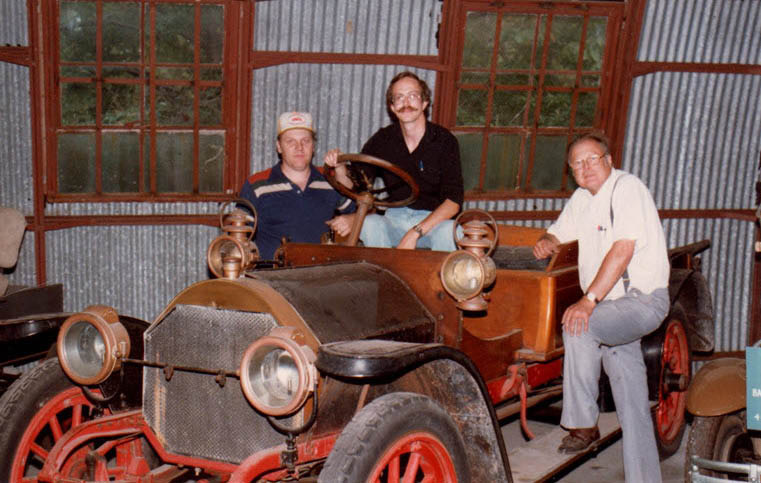
Clark filtered his encyclopedic knowledge into “The Standard Catalog of American Cars: 1802-1945,” a bible for collectors and historians. He was the chief researcher for writer and good friend Beverly Rae Kimes, an acclaimed auto authority who shared his fondness for driving the corkscrew turns between fact, fiction and fable. He strained his love of interviewing, editorializing and yarning into “Young Nuts and Old Bolts,” a 1972-1978 column in Old Cars magazine (now Old Cars Weekly). A preservationist to his chassis, he even bought the rights to a dead company, Simplex, which customized luxury autos for the Rockefellers.
Epilogue
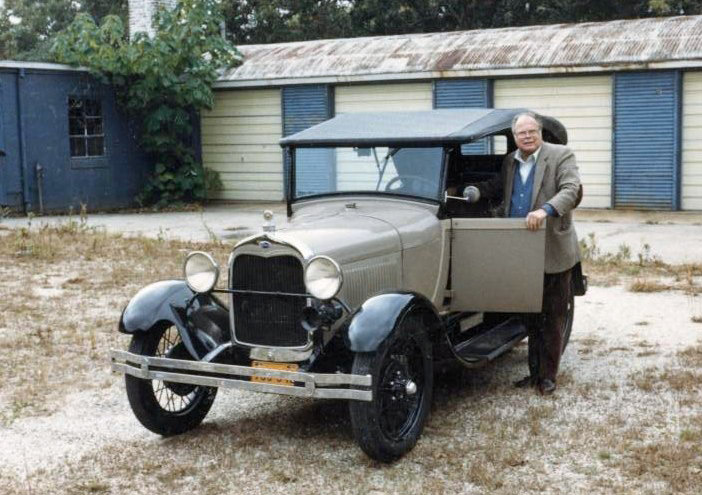
Austie Clark’s Long Island Automotive Museum had an inglorious end. In 1980 he closed the three-bay Quonset hut to the public after decades of decreasing revenues. He blamed his fall from grace on the Town of Southampton’s refusal to let him advertise on billboards around town. He apparently didn’t benefit enough from the extra traffic on the Montauk Highway after the 1972 opening of Exit 72 of the Long Island Expressway, which enabled motorists to bypass Riverhead and race faster to the East End.
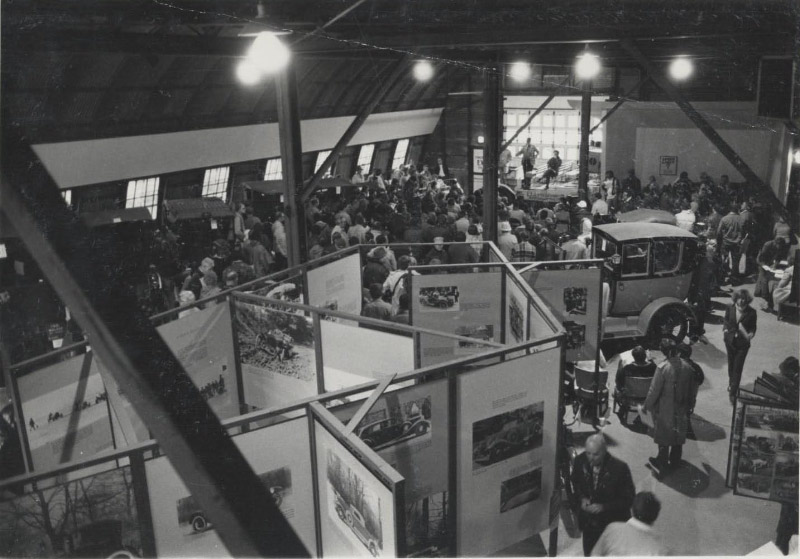
In 1980 Clark auctioned many of his vintage vehicles in front of his museum. Being a natural ringleader, he naturally served as his own auctioneer. Dave Brownell, a fellow collector, appraiser and antique-auto historian, watched the sale with Charles Addams and another Clark crony. “We started making side bets about which cars would make the most money,” says Brownell. “And Charlie Addams was really good. He won two-thirds of the bets. He cleaned our clocks.”
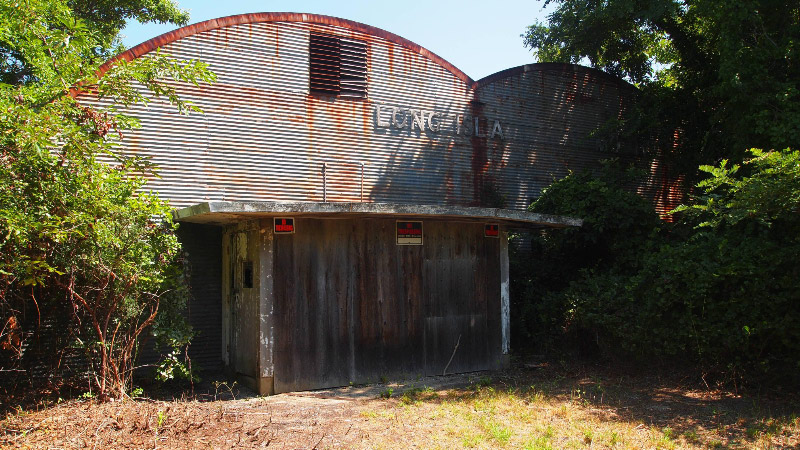
Clark died in 1991, three years after Charlie Addams expired in one of his cars. By then the museum was a wreck; today, it’s a dead mausoleum. The Quonset hut has a rusty façade, broken windows and skateboard graffiti. The gap-toothed sign reads “LONG ISLA MO IV M.” The parking lot is a grove of rogue birch trees. It seems entirely fitting that nearby is a company that sells funeral monuments.

Comments
Very interesting to see the 1908 Thomas Flyer in Austie’s museum in such decrepit condition. Its been shown all over the country in “preserved” original condition (even with mud on the wheels), but it was obviously restored to look old, (probably by Harrah when it was there?).
Also loved the videos of the Auto Red Bug being driven. I have four of them and love driving them too.
I thoroughly enjoyed the Henry Austin Clark museum presentation. I remember stopping by there sometime in the early nineties and thinking what a shame it was that it had closed down. Nice to know that much of it is on display in Dearborn—I hadn’t been aware of that. I wish that I had visited it when it was still open (and when I was out in the Hamptons on a fairly regular basis).
Howard,
Thanks for the Austin Clark retrospective. I’d be interested in reading that book.
I remember Austin’s museum very well. I visited it a number of times and really enjoyed the rustic feeling of the museum and the rarity of his cars. He was a rare individual. I remember the nice article about Austin Clark in Automobile Quarterly a few years ago. The article referred to his friendship with Beverly Rae Kimes and their collaboration on their famous book, The Standard Catalog of American Cars.
Thanks for the memories.
Roger
Austin had a late teens Packard Twin-Six and loved the story of how sales people would demo its power for prospects. they’d put in 3rd gear, he said, and start off smoothly - it had so much torque - and then say oops, sorry, I started in 3rd by mistake - put it in 1st and resume the demo. we met shortly after Castro appropriated the family sugar holdings. He felt poor after that. He was a gregarious man and corralled near strangers to come over to the Glen Cove house after a Long Island car show - where I had a nice conversation with Peter Helck
Good afternoon Howard Very interesting indeed,especially the video,the oldtime music that goes along with it
From Tom C.
“Excellent Austie Clark feature.
Thanks,”
From Robert R:
“Thanks so much for the wonderful section on my old pal, Austin Clark.A true gentleman, truly missed.
We were two of the founders of the Madison Avenue Sports Car Drivers and Chowder Society, and he was a raconteur par excellence.
I used to drive past the museum whenever I went racing in Bridgehampton, and even later, after the LIE was extended, I would make it a point to visit Austie and the museum from my weekend home in Remsenburg.
So many good memories.”
Interesting….Loved it ! Thanks !
From James S:
“Great post today on the mystery stretch near Eisenhower park AND the read about one of my favorite places on earth as a kid…The Southampton Auto Museum. “